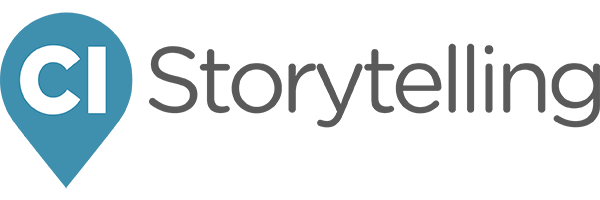After a stalled effort in the previous session, lawmakers returned with urgency. Over 1,200 public education-related bills were filed this session, with only a fraction becoming law.
Of the many bills filed, House Bill 2, Senate Bill 2, and House Bill 4 stood out as key efforts to reshape public education, according to public education advocacy group Raise Your Hand Texas.
"Coming into this session, legislators had a lot to accomplish, including addressing the impact of double-digit inflation on school districts, which made funding a huge priority,” said Bob Popinski, senior director of policy for Raise Your Hand Texas. “Overall, our main goals were to ensure schools could operate effectively and offer competitive pay to attract and retain teachers."
Click here for a 2025 Legislative Session wrap-up

House Bill 2
HB 2, signed into law by Gov. Greg Abbott, provides $8.5 billion in new funding over the next two years, aiming to address critical needs in public education across the state.
HB 2 funding breakdown:
- $3.7 billion for teacher pay raises
- $1.3 billion for fixed costs, such as transportation, utilities, and insurance
- $850 million for special education
- $500 million for raises for support staff, including bus drivers, janitors, and librarians
- $433 million for early literacy and numeracy initiatives
- $430 million for school safety
- $200 million for teacher preparation and certification
A major highlight of the legislation passed is the teacher pay raise, which varies in the amount given to each teacher based on the size of the district and each teacher’s years of experience.
In districts with 5,000 students or less, teachers with three to four years of experience would receive a $4,000 raise, while those with at least five years of experience would receive $8,000. In districts with over 5,000 students, educators with three to four years of experience would get a $2,500 raise, and teachers with five or more years of experience would earn $5,000.
That said, some school districts express concern that such a low increase to the basic allotment does not adequately address inflationary issues and may not fully address their unique needs, and in some cases, the teacher pay raises could create further strain rather than relief.
“Since our neighboring districts are similar in size and will offer comparable raises, the passage of HB 2 does not add an advantage, but it does compensate our teachers. It’s a positive start,” Hutto ISD Superintendent Jeni Neatherlin said. “While HB 2 provided some funding for support staff, we would like to provide an increase for all of our staff, not just teachers. In Hutto, we have over 700 non-classroom staff, and after HB 2, we will continue to face the challenge of finding funds to support all employees.”
Despite what is being called historic funding, it’s important to note that coming into the legislative session, estimates showed districts would need around $19.6 billion to maintain the purchasing power they had in 2019.
“House Bill 2 was a great first step,” Popinski said. “We applaud the Legislature for passing it, as $8.5 billion is a major win for public schools. Whether it meets the needs of every district will vary. It's a big number, but our schools still face tough decisions. You're still going to see some school districts with potential staff cuts, school closures and program cuts.”
Senate Bill 2
SB 2 establishes a statewide education savings account program allowing eligible families to use public funds for private school tuition, homeschooling, and other educational expenses.
The program allocates up to $1 billion in the 2026-27 school year, with projections showing it could grow to $8 billion per biennium within six years.

Administered by the Texas Comptroller of Public Accounts, the funding amount varies by eligibility. Most families will receive about 85% of the average per-student public school funding, or roughly $10,000.
Students with disabilities may receive up to $30,000, based on the special education services they would qualify for in public school. Homeschool families can receive up to $2,000 per student annually.
If the number of applications exceeds the available funding, a lottery system will be used to determine who receives ESA funds. Awards will be distributed in priority order through four buckets, starting with the highest-need groups and continuing until all funds are allocated:
- Students with disabilities whose family earnings are below 500% of the Federal Poverty Line (FPL)
- Families earning below 200% of the FPL, which is less than around $64,000 for a family of four
- Families earning between 200% and 500% of the FPL, which is roughly between $64, 401 and $160,000 for a family of four
- Families earning more than $160,000 annually, which is 500% over the FPL
"When a student leaves a public school, the funding follows them,” Popinski said.” On average, that’s about $10,000 per student. If a small district loses 10 students to the ESA program, that’s $100,000 gone from their operating budget. Ten students may not seem like a lot, but the school still has to staff transportation, the cafeteria, and pay teachers, paraprofessionals and others. Even small enrollment losses can start to impact how districts manage their budgets."
Educators also worry about equity, as private and homeschool recipients aren’t held to the same accountability standards as public schools, yet still receive public dollars. This raises broader concerns about transparency and the state’s commitment to public education.
Additionally, Texas operates under a balanced budget, meaning ESA funding must be offset by cuts elsewhere. That could reduce state funding beyond public education and extend into other priorities, such as water or transportation.
House Bill 4
Despite passing the Texas House with overwhelming bipartisan support (143-1), HB 4—a major proposal to modernize student assessments and accountability—ultimately did not make it across the finish line.
The bill would have replaced the high-stakes State of Texas Assessments of Academic Readiness, or STAAR, with nationally norm-referenced exams administered three times a year. These shorter assessments, with results available within 24 hours, were designed to give teachers timely insights to better support student learning and help parents track progress throughout the year.
HB 4 also aimed to reform the A-F accountability system. Currently, elementary and middle schools are graded entirely based on a single STAAR exam. The bill proposed using a broader set of metrics, including participation in early childhood programs, extracurricular activities, and career and technical education, offering a more complete picture of school performance.
“When we’re held accountable, we need the most valid data possible. Without valid data, an accountability system doesn’t serve its purpose,” Neatherlin said. “While no system is perfect, there’s broad agreement that the STAAR test isn’t the only measure. We would have loved to see a local accountability system that reflects the values of our community and highlights the areas they find most important for student success.”
Public support for reform was strong. A Raise Your Hand Texas survey of more than 15,600 Texans—including parents, students, educators, business leaders, and others—found that 83% opposed grading schools solely on STAAR scores, and 69% said the test doesn’t accurately reflect student learning.
Although HB 4 advanced through both chambers with different language, disagreements between chambers over key provisions prevented a final vote or the passage of this legislation.
Other notable legislation
In addition to major bills like HB 2, SB 2, and HB 4, Raise Your Hand Texas tracked a range of other bills that passed this session, including:
- SB 4: property tax relief
- SB 12: parental rights expansion
- SB 13: library materials
- SB 569: virtual and hybrid schools
- HB 6: school discipline reform
- HB 1481: cellphone ban policy
Although this legislative session brought significant wins for Texas public schools, education leaders say the work is far from over.
“Pay attention to how these laws are being implemented—both by the Texas Education Agency and your local school district,” Popinski said. “Go to school board meetings, see how the changes are impacting your community, and get involved. With elections coming up, it’s important to make your voice heard before the next legislative session.”
To stay informed on how education policy continues to unfold, sign up for Raise Your Hand Texas’ Across the Lawn newsletter or visit www.raiseyourhandtexas.org.
The above story was produced by Community Impact's Multi Platform Journalist Chloe Chapel, with information solely provided by the local business as part of its "sponsored content" purchase through our advertising team.






